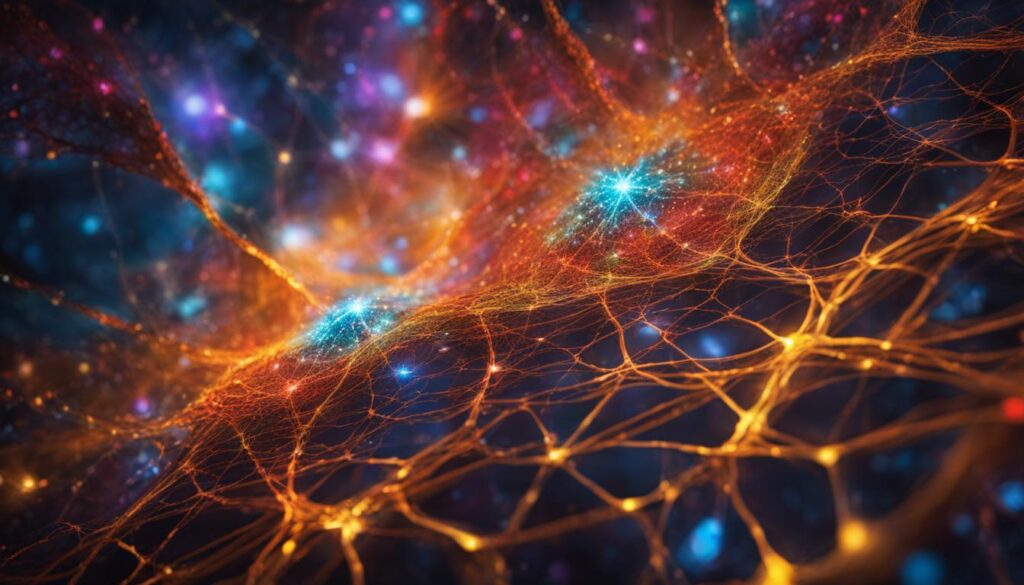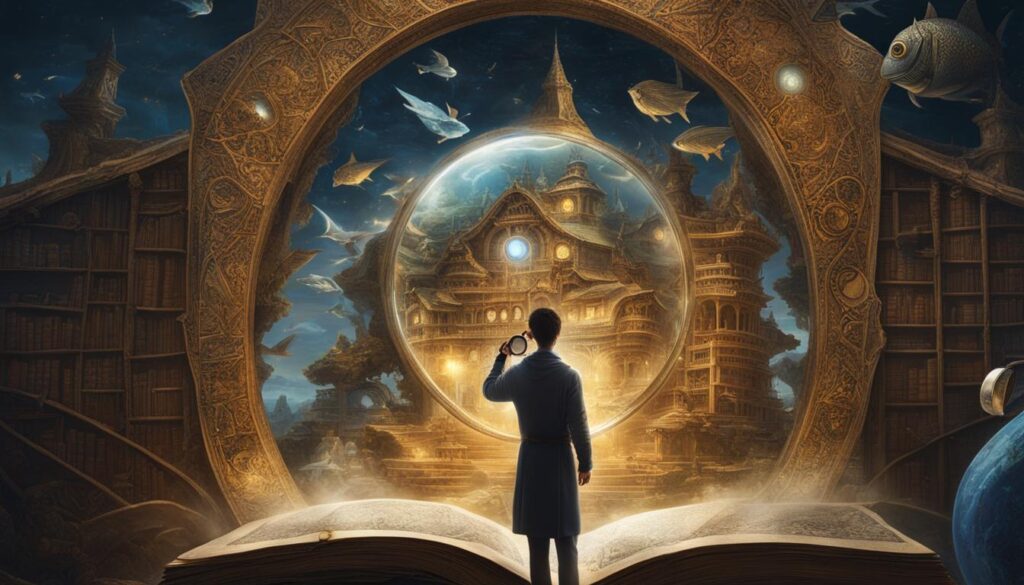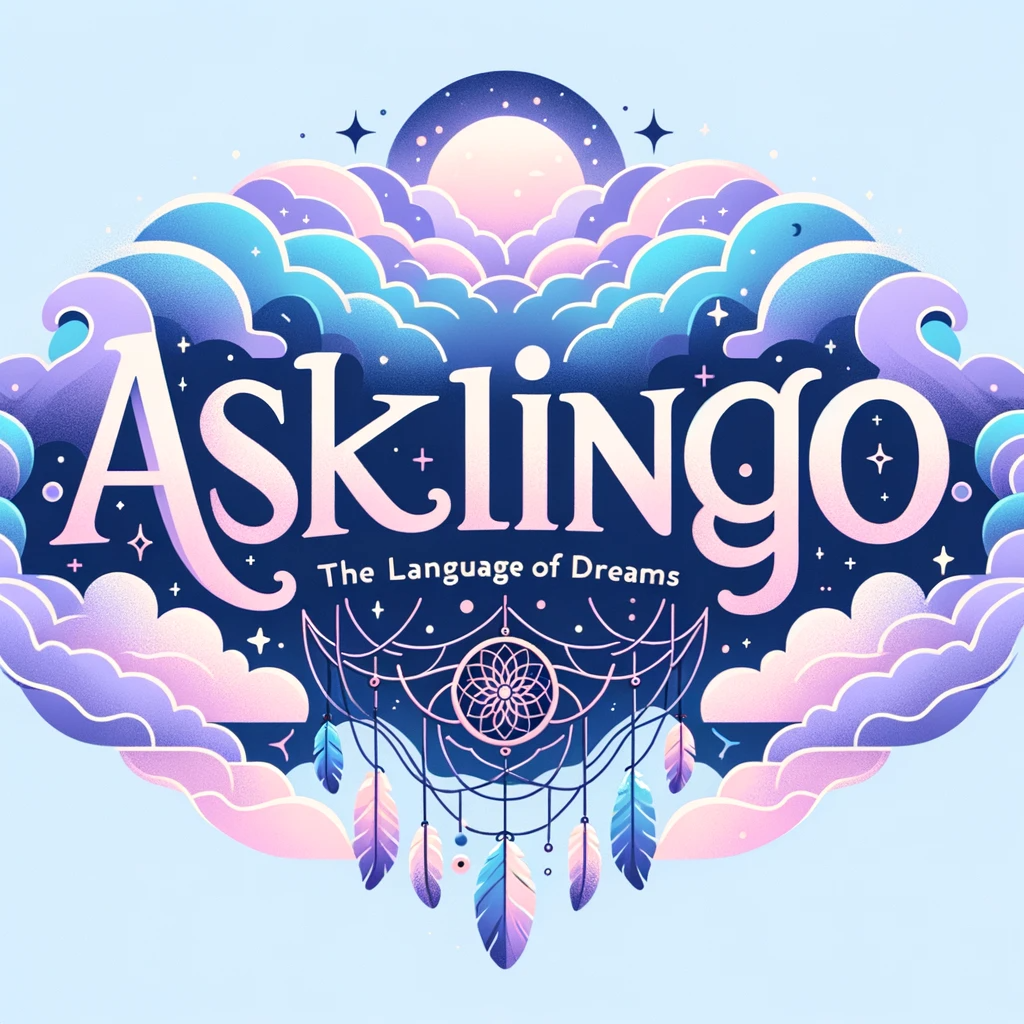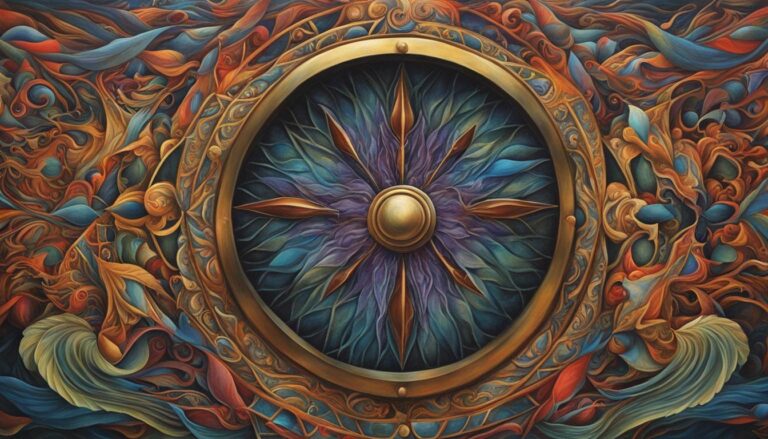Unraveling the Mysteries of Your Own Dream Journeys
Dreams have fascinated humans for centuries, serving as gateways to the enigmatic realm of the subconscious mind. They offer a glimpse into our inner thoughts and emotions, often leaving us with lingering questions and a sense of curiosity. But what do these dreams really mean? How can we unravel the hidden symbolism embedded within them? In this article, I will explore the fascinating world of dream interpretation, analyzing the subconscious mind and decoding the secrets that lie within our dreamscapes.
Key Takeaways:
- Dreams serve as a way for the mind to process emotions and work through unresolved issues.
- The science of dreaming reveals that dreams occur during the REM stage of the sleep cycle when the brain is highly active.
- Interpreting dream symbols can provide valuable insights into our subconscious thoughts and emotions.
- Lucid dreaming offers the potential for self-awareness and creative exploration within the dream state.
- Emotions play a significant role in dream content, and exploring them can lead to self-discovery and emotional healing.
The Science Behind Dreaming
Dreams have intrigued and puzzled scientists and researchers for centuries. One of the fascinating aspects of dreaming is the science behind it. Understanding the dynamics of dreaming can shed light on the mysteries of our own dream journeys.
Dreams occur during the Rapid Eye Movement (REM) stage of the sleep cycle, which is characterized by high brain activity levels similar to wakefulness. It is during this stage that vivid and often surreal dream experiences take place. The brain’s limbic system, responsible for emotions and memories, plays a crucial role in the creation of dreams.
Scientists have put forth various theories in an attempt to explain the purpose of dreaming. Some propose that dreaming helps with memory consolidation, allowing the brain to process and store information gathered throughout the day. Others suggest that dreams serve as a mechanism for problem-solving, enabling us to explore different scenarios and outcomes in a safe and controlled environment.
Theories on Dream Creation
“Dreams are the touchstones of our characters.” – Henry David Thoreau
One theory posits that dreams are a byproduct of random brain activity during sleep. This theory suggests that the brain creates narratives to make sense of the chaotic signals it receives. Another theory proposes that dreams are a reflection of our deepest desires, fears, and unresolved conflicts. These theories highlight the complexity of dream creation and the intricate interplay between our conscious and subconscious minds.
By delving into the science behind dreaming, we can gain valuable insights into this enigmatic aspect of human experience. The brain’s activity during the REM stage, the role of the limbic system, and the ongoing research on dream theories all contribute to unraveling the mysteries of our dream journeys.

Interpreting Dream Symbols
Dream symbols are like puzzle pieces that can unlock the hidden messages of our subconscious mind. Each symbol carries its own unique meaning and can provide valuable insights into our thoughts, emotions, and experiences. Let’s explore some common dream symbols and their interpretations:
Falling Dreams
Falling dreams are often associated with a lack of control or feeling of insecurity. They can represent a fear of failure or losing control in some aspect of your life. Pay attention to the circumstances surrounding the fall in your dream to gain further insight into what it may symbolize.
Teeth Dreams
Teeth dreams can reflect our sense of power and confidence. Losing teeth in a dream may indicate feelings of vulnerability or insecurity. On the other hand, strong and healthy teeth can represent a sense of empowerment and the ability to effectively communicate your thoughts and desires.
Chase Dreams
Being chased in a dream may indicate a need to confront fears or unresolved conflicts. It can symbolize running away from something or someone in your waking life that is causing you stress or anxiety. Consider the emotions you experience during the chase and any recurring patterns to uncover the underlying message.
Flying Dreams
Flying dreams symbolize freedom and a desire to transcend limitations. These dreams often evoke a sense of exhilaration and joy, as if you have the power to rise above challenges and obstacles. Pay attention to the height and ease of your flight to gain insights into your level of self-confidence and optimism.
Snake Dreams
Snake dreams often represent hidden fears and a need for transformation. The snake is a powerful symbol of change and rebirth. The context and behavior of the snake in your dream can provide clues to the specific areas of your life that may be in need of transformation or healing.
Interpreting dream symbols is a deeply personal and intuitive process. While there are general interpretations for common symbols, it’s important to consider your own emotions, experiences, and personal associations when deciphering the meaning of your dreams. Keeping a dream journal can help you track recurring symbols and patterns, allowing you to gain a deeper understanding of your own dream journey.

The Power of Lucid Dreaming
In the realm of dreams, there exists a phenomenon that holds immense potential for self-exploration and discovery – lucid dreaming. This extraordinary state of consciousness allows individuals to become aware that they are dreaming while still within the dream itself. Through lucid dreaming, we unlock the doors to a world where self-awareness and dream control intersect, providing us with a unique opportunity to delve into the depths of our subconscious minds.
Lucid dreaming offers us the ability to navigate the dream narrative with intention and purpose. Imagine being able to soar through the skies, explore fantastical landscapes, or engage in meaningful conversations with dream characters. The possibilities are limited only by our imagination. With practice and self-reflection, we can learn to harness the power of lucid dreaming to gain insights into our thoughts, desires, and fears.
“Lucid dreaming provides a direct gateway to the inner workings of the mind,” says Dr. Jonathan Smith, a leading expert in dream research. “It offers a unique opportunity for individuals to confront unresolved issues, overcome fears, and tap into their innate creativity.”
Advancements in neuroimaging techniques have shed light on the neural correlates of self-awareness and consciousness during lucid dreaming. Through studies utilizing functional magnetic resonance imaging (fMRI) and electroencephalography (EEG), researchers have observed specific brain activity patterns associated with lucid dreaming. These findings highlight the potential for further exploration and understanding of the intricacies of the dreaming mind.

Exploring the Boundaries of the Dream World
Lucid dreaming presents us with a unique opportunity to explore the boundaries of the dream world and blur the lines between imagination and reality. By cultivating self-awareness and developing techniques to induce lucid dreams, we can embark on a journey of self-discovery and personal growth. Whether it’s overcoming phobias, practicing new skills, or simply indulging in limitless creativity, lucid dreaming holds the key to unlocking the full potential of our dream experiences.
Emotional Processing in Dreams
Our dreams are not just random images and stories that play out while we sleep. They have a deep connection to our emotions and can provide a unique avenue for emotional processing. Dreams often serve as a way for our subconscious mind to process and make sense of our daily experiences, thoughts, and feelings. By examining the emotions experienced in our dreams, we can gain valuable insight into our own emotional landscape.
Nightmares, for example, can be seen as a mechanism for processing traumatic experiences. They allow us to confront and work through our fears in a safe and controlled environment. By revisiting these intense emotions in the dream realm, we can begin the process of healing and find resolution. Dream therapy, which involves exploring and analyzing the emotions and symbolism in our dreams, can provide a powerful tool for emotional healing and self-discovery.
Dream Therapy: Uncovering Hidden Truths
“Dreams are the royal road to the unconscious.” – Sigmund Freud
Dream therapy is a therapeutic modality that uses the analysis of dreams to gain insight into the unconscious mind. By examining the symbolism, emotions, and patterns present in our dreams, we can uncover hidden truths about ourselves and our inner world. Through dream therapy, we can explore unresolved conflicts, desires, and fears that may be influencing our waking lives. This process of self-discovery and emotional healing allows us to gain a deeper understanding of ourselves and make positive changes in our lives.

Our dreams have the power to reveal the depths of our emotions, guiding us towards a greater understanding of ourselves. Through dream therapy and the exploration of our dream experiences, we can embark on a transformative journey of self-discovery and emotional healing. By embracing and harnessing the emotional processing capabilities of our dreams, we can tap into the vast potential of our subconscious mind.
Cultural Perspectives on Dreams
Dreams have long held cultural significance and have been interpreted differently across various societies and indigenous cultures. Dream symbolism and cultural meanings play a significant role in understanding the human experience and the inner workings of the mind.
In indigenous cultures, dreams are often seen as portals to the spirit world or as a means of receiving divine guidance. They are considered sacred and are used for spiritual and healing purposes. Dream symbolism varies among different indigenous groups, with symbols and narratives carrying specific cultural significance and interpretations.
Decision-making and Dream Interpretation
In certain cultures, dreams are believed to offer insight and guidance when making decisions. Dreams are seen as a way for the subconscious mind to communicate important information or provide clarity on a particular situation. Through dream interpretation, individuals can seek answers and guidance from their dreams to aid in decision-making processes.
Dreams can also serve as a tool for personal growth and self-reflection. Exploring dream symbolism and cultural meanings can enhance our understanding of ourselves and our place within society. It allows us to tap into our subconscious thoughts and emotions, making connections between our dreams and waking life experiences.
Cultural Diversity and Dream Analysis
The cultural diversity in dream symbolism highlights the rich tapestry of human experiences. Understanding cultural perspectives on dreams enables us to appreciate the vast array of meanings and interpretations that dreams hold. It broadens our horizons and encourages us to take a more holistic approach to dream analysis, considering cultural contexts and beliefs.
By recognizing the cultural influences on dream symbolism, we gain a deeper understanding of our own dreams and the dreams of others. This knowledge invites us to embrace cultural diversity and see dreams as a universal language that connects us all in the realm of the subconscious mind.
Embracing the Journey of Dream Exploration
Dreams transport us to a world where the boundaries of reality blur, revealing the hidden depths of our subconscious minds. They invite us to embark on a captivating journey of self-discovery, where creativity and self-reflection intertwine. The dream world is a sanctuary where we can freely explore the inner workings of our minds, uncovering the profound truths that lie within.
In the realm of dreams, our imagination knows no bounds. We have the power to conjure entire landscapes, encounter fantastical creatures, and experience intense emotions. This limitless creative potential reminds us of the depth and richness that exists within us. By embracing the dream world, we tap into a wellspring of inspiration that can be channeled into our waking lives.
Self-reflection is a fundamental aspect of the dream journey. As we navigate the intricate narratives woven by our subconscious, we gain valuable insights into our desires, fears, and unresolved conflicts. The dream world serves as a mirror, reflecting our innermost thoughts and emotions back to us. By engaging in self-reflection, we can better understand ourselves and make positive changes in our lives.
Exploring the landscapes of our dreams is a transformative experience. It allows us to delve into the depths of our subconscious minds, uncovering hidden truths and gaining a deeper understanding of ourselves. Whether through journaling, practicing lucid dreaming, or simply reflecting on our dreams, we embark on a profound journey of self-discovery. So let us embrace the enigmatic realm of dreams and embark on this extraordinary expedition of the mind.







